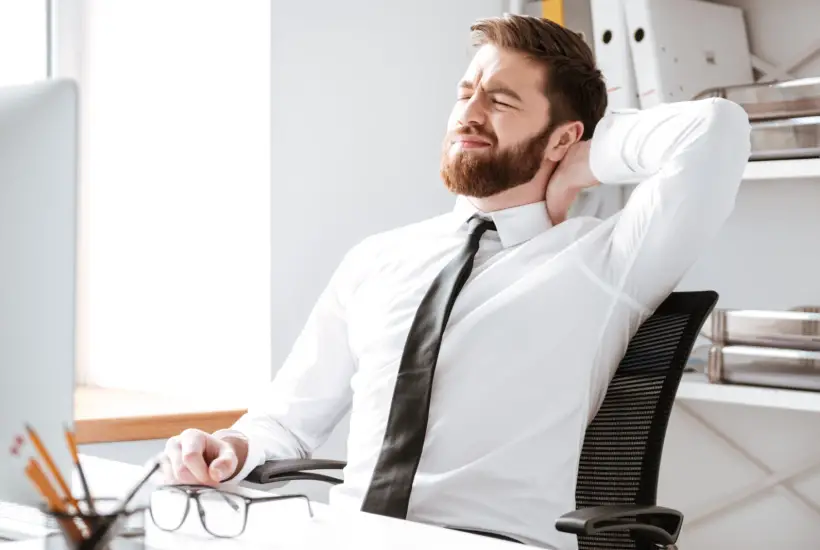There really is no doubting the advantages that digitalization has offered for people in the twenty-first century. Unfortunately, however, all that much of a nice thing can be harmful.
A large percentage of us interact solely through one device, the smartphone. A mobile phone can serve as a journal, a media center, and our primary point of contact for family members and friends. As a result, a smartphone may receive a variety of alerts on any given day.

Nevertheless, many people have no understanding that gazing at a mobile phone all the time can result in poor posture, also identified as ‘text neck,’ and what are the consequences of this bad posture?
Understanding how well the head interacts with our spine could indeed help us better understand how gazing at a cellphone can contribute to bad posture. To get proper guidance about this issue, look it up at health2delivery!
- 10 tips for staying healthy when travelling >>
- Positive impact of gentle exercise on mental health >>
- Natural pain relief remedies >>
What Is A Text Neck?
The average adult head weighs about a dozen pounds, so as the neck leans up or down, so much strain is placed on the spine. Furthermore, our bodies are very strong, so we often look up and down with little consequence. However, as with so many stuff in life, doing too much can be harmful to our health, and continuous gazing at a phone or tablet can cause early deformation on the spine, as well as degeneration in some cases.
That’s because the tissue is strained for extended periods, which causes it to become swollen and painful and achy. In more severe cases, it can result in nerve entrapment and sore muscles.
What Are The Symptoms Of Text Neck?
Countless people suffering from text neck have a variety of symptoms. However, it is recommended that individuals seek professional help if they have any of the symptoms listed:
- Headaches that last a long time.
- Sciatic nerve pain in the back.
- Shoulder pain, An increased deformation of the spine.
How To Prevent Oneself From This Issue?
1) When typing, pay attention to your posture.
Though it may appear pretty weird, retaining a mobile at eye level can help protect hunching or trying to type with your head hanging down.
2) Maintain a straight back.
Keep on reminding yourself to squeeze your shoulder blades back while texting. It would help if you also changed the seat’s height such that your feet are down on the ground and your knees are in alignment with or marginally lower than your torso.
3) Work on your posterior muscles.
Upper back exercises such as rows, pull-downs, and lateral flexion can help reinforce your posterior muscle. This will aid in the correction of your posture.
4) Make more time to unplug.
Digital technologies and devices were created to improve and simplify your life, not to bind you to them. Set a time limit for each and every 60 minutes to get up off the couch and go for a short walk.
Think about leaving your mobile in some other room while you’re in bed every night, and plan a time to disconnect. This might be at specific times of the day, one day per week, or for an entire weekend each month–whatever feels suitable for your routine. The notable feature is to rest both the mind and your body.
What Is A Proper Way To Sit?
To avoid hunching, relax with the seat leaning back 25-30 degrees and good back support. The discs in the back and the neck are confined to fairly low pressures in this position than in a vertical position, and the muscles in the neck area no longer ought to contract to keep your head up.
Once you recline, a portion of your body mass transfers to the seat rather than straight up your spine. As an outcome, your spine is subjected to far less force, and you suffer relatively lesser pain.
How Can This Cause More Serious Problems?
Initially, the muscle tissue has to work hard to keep your neck upright. However, the muscles contract, putting a lot of pressure mostly on discs.
Consequently, the discs wear out way faster, resulting in protrusion or rupture. If the torn disc whacks a nerve, you may experience pain, lack of strength, or loss of feeling in your arm, which may necessitate surgical intervention.
When to Seek Help
If your injury becomes worse, particularly when you’ve already practised the tips without any improvement, you must see a doctor to rule out other possible future conditions that can affect your spine and neck.
Stay in touch
Hope this post inspires you and of course, I’d love to know what you think! Let me know in the comments below or find me on Instagram, Facebook or Twitter and add the hashtag #practicalfrugality so that I can see your post.
Or why not subscribe to my weekly newsletter with frugal living tips and recipes straight to your mailbox.
Magdalena

Leave a Reply